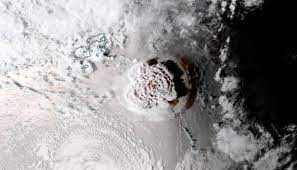Astronomers with the European Southern Observatory (ESO) using a very large telescope (VLT) to scan the sky looking for stars, black holes, galaxies, and planets to learn. Recently, astronomers use VLT to find the nearest couple of supermassive black holes to the earth ever found. Finally, the Black Hole Duo will join a single giant black hole. The present invention is located in a galaxy named NGC 7727, which is located in the constellation of Aquarius.
While this supermasive black hole is the closest to the earth ever found, they are still at an extraordinary distance from our planet of 89 million light years. However, they were significantly closer than the previous supreme supermasive black hole pair which was 470 million light years. Apart from being a pair of black holes closest to the earth, the duo also has a smaller separation significantly than a pair of known black holes.
The duo at NGC 7727 only has 1600 light years between them. While it’s still far away, the astronomers showed this was the first partner of the supermassive black hole found so close to each other. The distance of 1600 light years is less than half the separation of previous recording holders. Usually, the supermassive black hole lives in the center of the galaxy. However, they can be paired when the galaxy joins, placing it on a collision course that can take millions of years before they join.
Scientists study the road taken by black holes, the distance of their separation, and the speed they determine the duo will join into one supermassive black hole in the next 250 million years. Astronomers believe that merging a pair of black holes this size can explain how the most massive black holes in the universe are born.
Astronomer Karina Voggel and her team used the technique to determine the mass of black holes that viewed how their gravitational pull affected the stars around them. This is the first time a pair of black holes have been measured using the method. Measurements using this method is possible because of how close a pair of black holes to the earth. The researchers relied on observations from the Paranal Observatory in Chile using a tool called Muse (Multi-Unit Spectroscopic Explorer) in their work. Astronomers also use data collected by the Hubble Space Telescope to confirm a pair of black holes classified as supermassive.
The black hole on the right side of the pair is at the NGC 7727 core and has a mass of almost 154 million times from the sun. Other black holes in the pair are significantly less large at 6.3 million times from the sun. Astronomers have suspected the NGC 7727 has two black holes but cannot confirm their suspicions in the past because of the lack of high-energy radiation originating from the nearest environment. The presence of high-energy radiation will confirm the black hole.
The discovery of supermassive black holes without high-energy radiation emissions shows that there are more black holes hiding in galaxies spread across the universe. Astronomers believe their findings can suggest the total number of supermassive black holes in the known universe are 30 percent higher than previously trusted. Finding more pairs of more hidden supermassive black holes will be easier when ESOs start operating a very large new telescope later this decade. The telescope will be placed in the Atacama Desert in Chile. The telescope will have an instrument called harmony that is able to make this discovery significantly further than the earth than what is currently possible.
Astronomers keep VLT work almost continuously, making discoveries in the cosmos. For example, in mid-November this year, astronomers use VLT to find black holes in a remote star cluster. In that case, the supermassive black hole that was previously unknown was outside








